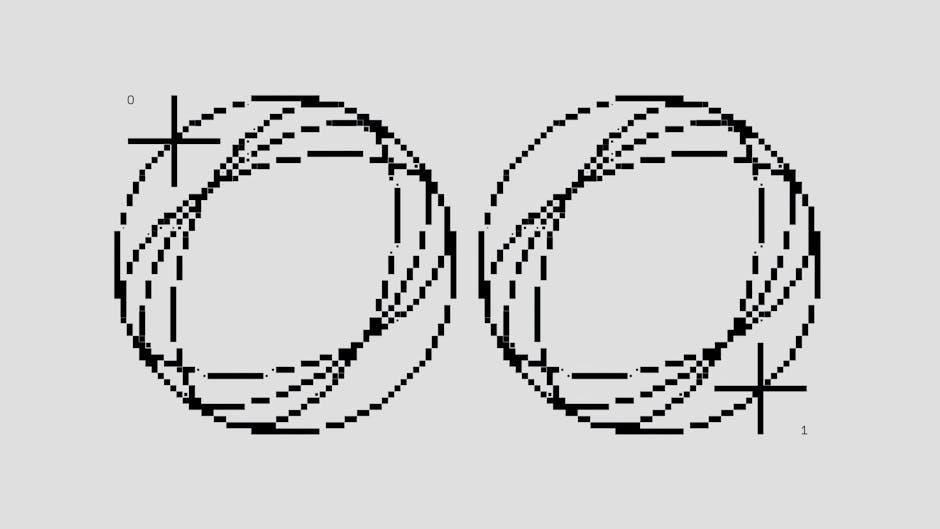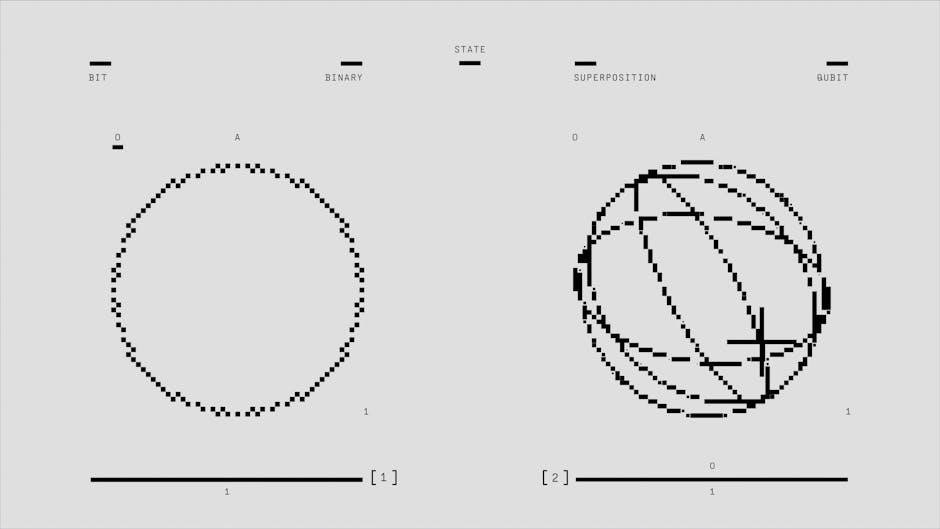
discrete mathematics and applications pdf
Discrete mathematics explores fundamental concepts like logic‚ combinatorics‚ and graph theory‚ with applications in computer science and problem-solving. Key resources include Rosen’s and Epp’s textbooks.
1.1 What is Discrete Mathematics?
Discrete mathematics is a branch of mathematics focusing on structures characterized by distinct‚ separate values‚ such as integers‚ graphs‚ and statements in logic. It contrasts with continuous mathematics‚ which deals with real numbers and sequences. Core topics include logic‚ combinatorics‚ graph theory‚ and number theory. These concepts are essential for understanding algorithms‚ computer science‚ and cryptography. Textbooks like Kenneth Rosen’s Discrete Mathematics and Its Applications and Susanna Epp’s Discrete Mathematics with Applications provide comprehensive introductions. The field emphasizes problem-solving and mathematical proofs‚ preparing students for practical applications in technology and scientific research. Its relevance spans coding theory‚ data structures‚ and artificial intelligence‚ making it a cornerstone of modern computational studies.
1.2 Brief History and Evolution
Discrete mathematics traces its roots to ancient civilizations‚ with early contributions from Greek philosophers like Euclid and Aristotle in logic and number theory. Medieval scholars‚ such as Indian mathematician Pingala and Persian astronomer Al-Biruni‚ advanced concepts in combinatorics and algebra. The 20th century saw a surge in its development‚ driven by the rise of computer science. Pioneers like Alan Turing and Kurt Gödel laid foundational work in computability and logical frameworks. The field expanded rapidly‚ incorporating graph theory‚ combinatorics‚ and probability. Textbooks by Kenneth Rosen and Susanna Epp became seminal resources‚ bridging theory and practical applications. Today‚ discrete mathematics remains vital‚ underpinning advancements in AI‚ cryptography‚ and quantum computing‚ with ongoing research continually refining its principles and applications.

Key Concepts and Definitions
Discrete mathematics involves essential concepts like sets‚ functions‚ graphs‚ and combinatorics‚ providing the mathematical foundation for problem-solving in computer science‚ cryptography‚ and algorithm design.
2.1 Logical Foundations
Logical foundations are the cornerstone of discrete mathematics‚ encompassing propositional logic‚ predicate logic‚ and Boolean algebra. These concepts are essential for constructing valid arguments and solving complex problems. Propositional logic deals with statements that can be true or false‚ while predicate logic extends this with quantifiers like “for all” and “there exists.” Boolean algebra‚ a fundamental tool in computer science‚ enables the design of digital circuits and simplifies logical expressions. These logical frameworks are crucial for programming‚ algorithm design‚ and artificial intelligence. They also form the basis for more advanced topics in discrete mathematics‚ such as set theory and combinatorics‚ ensuring a solid foundation for further study and application.
2.2 Combinatorics Basics
Combinatorics is a branch of discrete mathematics that focuses on counting and arranging objects. It involves fundamental principles such as the sum rule‚ product rule‚ and inclusion-exclusion principle. These tools enable the calculation of combinations‚ permutations‚ and partitions‚ which are essential in probability‚ statistics‚ and algorithm design. For instance‚ combinations determine the number of ways to select items without regard to order‚ while permutations consider ordered arrangements. Combinatorial methods also solve real-world problems‚ such as optimizing network designs or scheduling tasks. Textbooks like Rosen’s and Epp’s provide comprehensive coverage of these concepts‚ making them indispensable for students and researchers alike. Mastery of combinatorics is crucial for advancing in computer science and related fields.

Importance in Modern Science and Technology
Discrete mathematics underpins modern science and technology‚ enabling advancements in artificial intelligence‚ data analysis‚ and algorithm design. Its principles are crucial for optimization and problem-solving across diverse fields‚ supported by resources like Rosen’s and Epp’s textbooks.
3.1 Role in Computer Science
Discrete mathematics is foundational to computer science‚ providing essential tools for algorithm design‚ data structures‚ and computational theory. Concepts like graph theory and combinatorics enable efficient solutions for network analysis and optimization problems. Boolean logic underpins programming languages and circuit design‚ while number theory supports cryptography. Resources such as Rosen’s and Epp’s textbooks offer comprehensive coverage of these topics‚ bridging theory with practical applications in software development and system design. The study of discrete mathematics equips computer scientists with the mathematical rigor needed to innovate and solve complex challenges in the digital age.
3.2 Applications in Cryptography
Discrete mathematics is crucial in cryptography‚ underpinning secure communication and data protection. Number theory‚ particularly properties of prime numbers and modular arithmetic‚ is essential for encryption algorithms like RSA. Combinatorics and boolean logic also play roles in developing secure cryptographic protocols. Textbooks such as Rosen’s and Epp’s provide detailed insights into these applications‚ highlighting how discrete math ensures data integrity and confidentiality. These mathematical foundations are vital for modern security systems‚ enabling secure transactions and protecting sensitive information in an increasingly digital world.

Branches of Discrete Mathematics
Discrete mathematics encompasses graph theory‚ number theory‚ combinatorics‚ and logical foundations. These branches provide essential tools for solving problems in computer science and related fields.
4.1 Graph Theory
Graph theory is a cornerstone of discrete mathematics‚ studying objects represented as vertices and edges. It explores connections‚ paths‚ and network structures‚ crucial in computer science for network design‚ algorithms‚ and data structures. Applications include social network analysis‚ traffic optimization‚ and circuit design. Key concepts like trees‚ graphs‚ and graph coloring are foundational. Resources like Rosen’s Discrete Mathematics and Its Applications and Epp’s Discrete Mathematics with Applications provide comprehensive coverage. These texts highlight graph theory’s role in solving real-world problems‚ making it indispensable in modern computing and problem-solving scenarios.
4.2 Number Theory
Number theory is a fundamental branch of discrete mathematics‚ focusing on the properties and relationships of integers. It explores prime numbers‚ divisibility‚ and solutions to equations like Diophantine equations. Key concepts include the distribution of primes‚ modular arithmetic‚ and theorems like Fermat’s Little Theorem. Applications are vast‚ ranging from cryptography to computer science. Textbooks such as Rosen’s Discrete Mathematics and Its Applications and Epp’s Discrete Mathematics with Applications provide detailed insights. Number theory’s principles underpin secure communication systems and algorithm design‚ making it crucial for modern technology and computational problem-solving.

Real-World Applications
Discrete mathematics is essential in computer science‚ algorithms‚ and cryptography. It optimizes database systems‚ enhances network security‚ and solves complex problems in technology and engineering efficiently.
5.1 Algorithms and Complexity
Discrete mathematics is crucial in understanding algorithms and their complexity. It provides tools for analyzing sorting algorithms‚ graph traversal‚ and dynamic programming. Concepts like Big-O notation help measure performance‚ ensuring efficiency in real-world applications. Textbooks by Rosen and Epp detailed these principles‚ emphasizing their role in computer science. By studying these‚ professionals optimize software and solve complex problems effectively.
5.2 Database Systems
Discrete mathematics plays a vital role in database systems‚ particularly in relational databases and SQL. It underpins query optimization‚ ensuring efficient data retrieval and manipulation. Concepts like set theory and logic are foundational‚ enabling operations such as joins and aggregations. Finite-state machines and graph theory also contribute to database design and normalization. Textbooks like Rosen’s and Epp’s highlight these applications‚ demonstrating how discrete math ensures data integrity and scalability. By applying these principles‚ professionals design robust database systems capable of handling complex queries and large datasets efficiently.

Educational Resources and Books
Key resources include Rosen’s “Discrete Mathematics and Its Applications” and Epp’s “Discrete Mathematics with Applications.” These textbooks provide comprehensive coverage of core concepts and practical applications.
6.1 Recommended Textbooks
Several textbooks are highly recommended for studying discrete mathematics. Rosen’s Discrete Mathematics and Its Applications (7th and 8th editions) is a widely used resource‚ offering in-depth coverage of key topics like logic‚ combinatorics‚ and graph theory. Susanna S. Epp’s Discrete Mathematics with Applications (4th and 5th editions) is another excellent choice‚ providing clear explanations and practical examples. Additionally‚ Discrete Mathematical Structures by Kolman‚ Busby‚ and Ross is praised for its structured approach. These textbooks are available in PDF formats online‚ making them accessible for students. They are essential for understanding the fundamentals and applications of discrete mathematics‚ catering to both undergraduate and graduate levels of study.
6.2 Online Learning Platforms
Online learning platforms offer convenient access to discrete mathematics resources. Platforms like Coursera‚ edX‚ and Khan Academy provide courses and materials on discrete math‚ often linked to computer science. Udemy and Codecademy also feature courses with practical applications. Additionally‚ websites like GitHub host repositories with discrete math problem solutions and study materials. MIT OpenCourseWare offers free access to lecture notes and assignments from discrete mathematics courses. These platforms cater to diverse learning styles‚ enabling students to explore topics like logic‚ combinatorics‚ and graph theory at their own pace. They are invaluable for supplementing textbooks and enhancing understanding of discrete mathematics concepts and their real-world applications.

University Courses and Syllabi
University courses often include discrete mathematics as a core subject‚ covering topics like logic‚ combinatorics‚ and graph theory. Syllabi frequently reference textbooks by Rosen and Epp.
7.1 Typical Course Structure
A typical discrete mathematics course begins with foundational topics like logic‚ set theory‚ and combinatorics. These concepts are essential for understanding more advanced subjects. Courses often include modules on graph theory‚ number theory‚ and algebraic structures‚ which are crucial for problem-solving in computer science. Practical applications‚ such as algorithms and complexity analysis‚ are also emphasized to connect theory with real-world scenarios. Many syllabi incorporate textbooks like Rosen’s Discrete Mathematics and Its Applications or Epp’s Discrete Mathematics with Applications for comprehensive coverage. Additionally‚ courses may utilize interactive online resources to enhance learning. The structure ensures students gain both theoretical knowledge and practical skills‚ preparing them for further studies in computer science and related fields.
7.2 Assessment Methods
Assessment in discrete mathematics courses typically involves a combination of homework assignments‚ quizzes‚ midterms‚ and final exams. These evaluations test students’ understanding of key concepts like logic‚ combinatorics‚ and graph theory. Problem-solving skills and the ability to apply theoretical knowledge to practical scenarios are often emphasized. Additionally‚ some courses incorporate projects or presentations‚ allowing students to explore specific topics in depth. Grades are usually based on performance across these assessments‚ with a focus on analytical thinking and precise problem-solving techniques. Resources like Discrete Mathematics and Its Applications by Kenneth Rosen are frequently used to align assessments with course materials‚ ensuring a comprehensive evaluation of student learning outcomes.

Current Research and Developments
Research focuses on advancements in combinatorial optimization‚ network theory‚ and quantum computing applications. New mathematical software tools enhance problem-solving capabilities in discrete mathematics.
8.1 Recent Breakthroughs
Recent advancements in discrete mathematics include significant progress in combinatorial optimization‚ network theory‚ and quantum computing applications. Researchers have developed new algorithms for solving complex problems in graph theory and number theory. Breakthroughs in cryptographic techniques have enhanced data security‚ leveraging number theory and combinatorial methods. Additionally‚ advancements in mathematical software tools‚ such as those for solving quadratic forms and generating math tests‚ have streamlined problem-solving processes. These developments highlight the evolving nature of discrete mathematics and its growing relevance in modern technology and scientific research.
8.2 Ongoing Projects
Current research in discrete mathematics focuses on advancing theoretical frameworks and practical applications. Projects include developing sophisticated algorithms for network analysis‚ improving cryptographic protocols‚ and exploring quantum computing applications. Mathematicians are also working on enhancements to combinatorial optimization techniques‚ which are crucial for solving real-world problems in logistics and finance. Additionally‚ there is ongoing development of educational software tools aimed at creating interactive math tests and simulations. These projects underscore the dynamic and interdisciplinary nature of discrete mathematics‚ highlighting its role in driving innovation across various fields. Researchers continue to explore novel applications of discrete structures to address emerging challenges in technology and science.

Tools and Software Used
Mathematica‚ Maple‚ and LaTeX are essential for computations‚ document preparation‚ and typesetting respectively. A specialized software package generates interactive math tests‚ aiding in education and problem-solving activities.
9.1 Mathematical Software
Mathematical software like Mathematica and Maple are indispensable for computations in discrete mathematics. These tools enable symbolic manipulations‚ graph visualizations‚ and complex problem-solving. LaTeX is essential for typesetting mathematical documents‚ ensuring clarity and precision in academic writing. Additionally‚ specialized software packages‚ such as test generators‚ focus on creating interactive math exercises‚ enhancing educational experiences. These tools are widely used in both research and teaching‚ facilitating deeper exploration of discrete concepts like combinatorics and graph theory. Their applications span from algorithm design to data analysis‚ making them integral to modern mathematical workflows and education. They also support collaborative projects and simplify the presentation of complex ideas‚ fostering innovation and accessibility in the field.
9.2 Simulation Tools
Simulation tools are essential for visualizing and experimenting with discrete mathematical concepts. Software like Graph Theory Tool and AlgoSim allow users to interactively explore graphs‚ algorithms‚ and combinatorial structures. These tools are particularly valuable for educational purposes‚ enabling students to see theoretical principles in action. They often include features for creating custom simulations‚ analyzing results‚ and sharing findings. Simulation tools also support research by providing environments to test hypotheses and model complex systems. Their versatility makes them indispensable for both teaching and research‚ offering hands-on insights into discrete mathematics applications. Additionally‚ they foster a deeper understanding of abstract concepts by translating them into tangible‚ observable processes.

Future Trends and Emerging Fields
Emerging fields like artificial intelligence and quantum computing rely heavily on discrete mathematics. Advances in these areas are driving innovation and opening new research possibilities.
10.1 Artificial Intelligence
Artificial intelligence heavily relies on discrete mathematics for algorithms and data analysis. Machine learning‚ neural networks‚ and decision trees depend on combinatorial optimization and graph theory. Discrete structures enable efficient problem-solving in AI systems‚ from pattern recognition to natural language processing. Advances in AI-driven applications‚ such as computer vision and robotics‚ are rooted in mathematical frameworks provided by discrete mathematics. The development of quantum algorithms further accelerates AI capabilities‚ emphasizing the critical role of discrete math in future innovations. As AI evolves‚ its applications in diverse fields like healthcare and finance will continue to draw on foundational discrete mathematical principles.
10;2 Quantum Computing
Quantum computing represents a revolutionary field where discrete mathematics plays a pivotal role. Concepts like qubits‚ superposition‚ and entanglement rely on mathematical frameworks from discrete areas such as linear algebra and number theory. Discrete structures like graphs and combinatorial designs are essential for quantum error correction and algorithm optimization. Research in quantum computing often draws on discrete mathematical tools to solve complex problems‚ such as Shor’s algorithm for integer factorization. The integration of discrete mathematics with quantum principles is driving breakthroughs in encryption‚ optimization‚ and simulation. As quantum technologies advance‚ the interplay between discrete mathematics and quantum computing will continue to shape future innovations‚ enabling powerful solutions across industries.
Discrete mathematics is essential for problem-solving and computer science‚ with resources like Rosen’s and Epp’s textbooks guiding deeper exploration and practical applications.
11.1 Summary of Key Points
Discrete mathematics is a cornerstone of modern computer science‚ emphasizing logical reasoning‚ combinatorics‚ and graph theory. Textbooks like Rosen’s Discrete Mathematics and Its Applications and Epp’s Discrete Mathematics with Applications provide comprehensive overviews; These resources highlight the field’s relevance in algorithms‚ cryptography‚ and data structures. Key topics include logical foundations‚ counting principles‚ and graph theory‚ which are essential for problem-solving. The applications of discrete mathematics span computer science‚ engineering‚ and finance‚ making it a vital tool for analyzing and solving real-world problems. These texts also emphasize the importance of proofs and mathematical rigor‚ preparing students for advanced studies and practical applications in technology and beyond.
11.2 Encouragement for Further Study
Delving deeper into discrete mathematics offers vast opportunities for intellectual growth and practical application. With resources like Rosen’s Discrete Mathematics and Its Applications and Epp’s Discrete Mathematics with Applications‚ students can explore advanced topics in combinatorics‚ graph theory‚ and logic. These texts provide a solid foundation for understanding algorithms‚ cryptography‚ and data structures‚ which are pivotal in computer science and engineering. Encouraging further study in this field can unlock career opportunities in tech‚ finance‚ and research. The continuous evolution of technology underscores the importance of discrete mathematics‚ making it an exciting and rewarding field to pursue. Embrace the challenge and explore the endless possibilities it offers!

